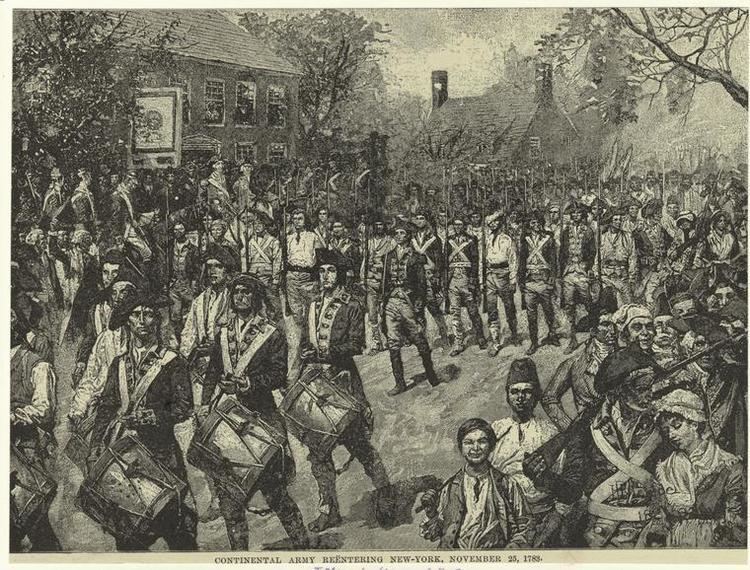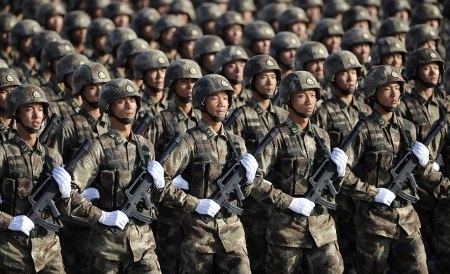 | ||
A standing army, unlike a reserve army, is a permanent, often professional, army. It is composed of full-time soldiers (who may be either career soldiers or conscripts) and is not disbanded during times of peace. It differs from army reserves, who are enrolled for the long term, but activated only during wars or natural disasters, and temporary armies, which are raised from the civilian population only during a war or threat of war and disbanded once the war or threat is over. Standing armies tend to be better equipped, better trained, and better prepared for emergencies, defensive deterrence, and particularly, wars. The term dates from approximately 1600, although the phenomenon it describes is much older.

History

The first possible record of a standing army is the army of Sumer in Mesopotamia, recorded on the Stele of the Vultures between 2600 and 2350 BC. Tiglath-Pileser III of Assyria (ruled 745–727 BC) created Assyria's first standing army.

The first known standing armies in Europe were in ancient Greece and Macedon. The male citizen body of ancient Sparta functioned as a standing army, unlike all other city-states (Poleis), whose armies were citizen militias. The existence of an enslaved population of Helots liberated the Spartiates from the need to work for a living, enabling them to focus their time and energy on martial training. Philip II of Macedon instituted the first professional army, with soldiers and cavalrymen paid for their service year-round, rather than a militia of men who mostly farmed the land for subsistence and occasionally mustered for campaigns.
The army of ancient Rome is considered to have been a standing army during much of the Imperial period and during some of the late republican period.

The first modern standing armies in Europe were the Janissaries of the Ottoman Empire, formed in the fourteenth century. In western Europe the first standing army was established by Charles VII of France in the year 1445. The Hungarian king Matthias Corvinus had a standing army from the 1460s called the Fekete Sereg, which was an unusually big army in its age, accomplishing a series of victories and capturing parts of Austria, Vienna (1485) and parts of Bohemia.
By other definitions of a standing army, being understood as one of volunteering professionals instead of that of conscription levies or hired mercenaries, Spain created Europe's and the world's first modern standing army through the creation of the distinguished Tercios by Emperor Charles I of Spain (also known as Charles V of Austria). The Tercios revolutionized modern warfare in Europe and became the most prestigious and undefeated force during the era of Spanish Habsburg dominance in Europe. Eventually all European armies would try to mimic the style and tactics of fighting used by the Tercios because of their constant innovative evolution that was sparked by creative veteran soldiers that formed the regiments and their great leaders. The Tercios became such a successful force that their reputation as an undefeatable force gave them a psychological advantage in the battlefield against their enemies who greatly feared them. The Spanish Habsburgs would form Tercio regiments in all of their possessions, including the Italian Tercios, the Portuguese Tercios and the Burgundian Tercios.
In his influential work The Wealth of Nations (1776), economist Adam Smith comments that standing armies are a sign of modernizing society as modern warfare requires the increased skill and discipline of regularly trained standing armies. Since the eighteenth century standing armies have been an integral part of the defense of the majority of more economically developed countries.
In Great Britain, and the British Colonies in America, there was a sentiment of distrust of a standing army not under civilian control. In England, this led to the Bill of Rights 1689, which reserves authority over a standing army to Parliament, not the King, and in the United States, led to the U.S. Constitution (Article 1, Section 8) which reserves by virtue of "power of the purse" similar authority to Congress, instead of to the President. The President, however, retains command of the armed forces when they are raised, as commander-in-chief. In the course of this constitutional debate, Elbridge Gerry of Massachusetts, arguing against a large standing army, compared it, memorably and mischievously, to a standing penis:
